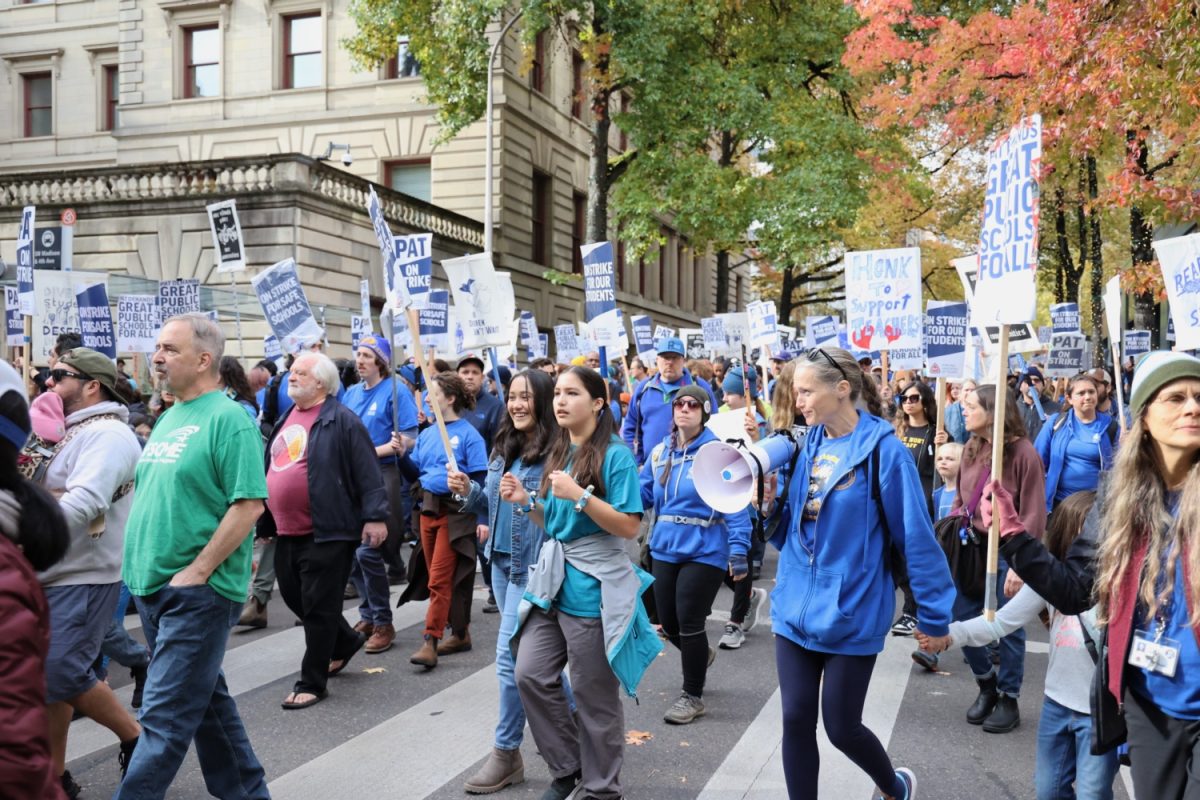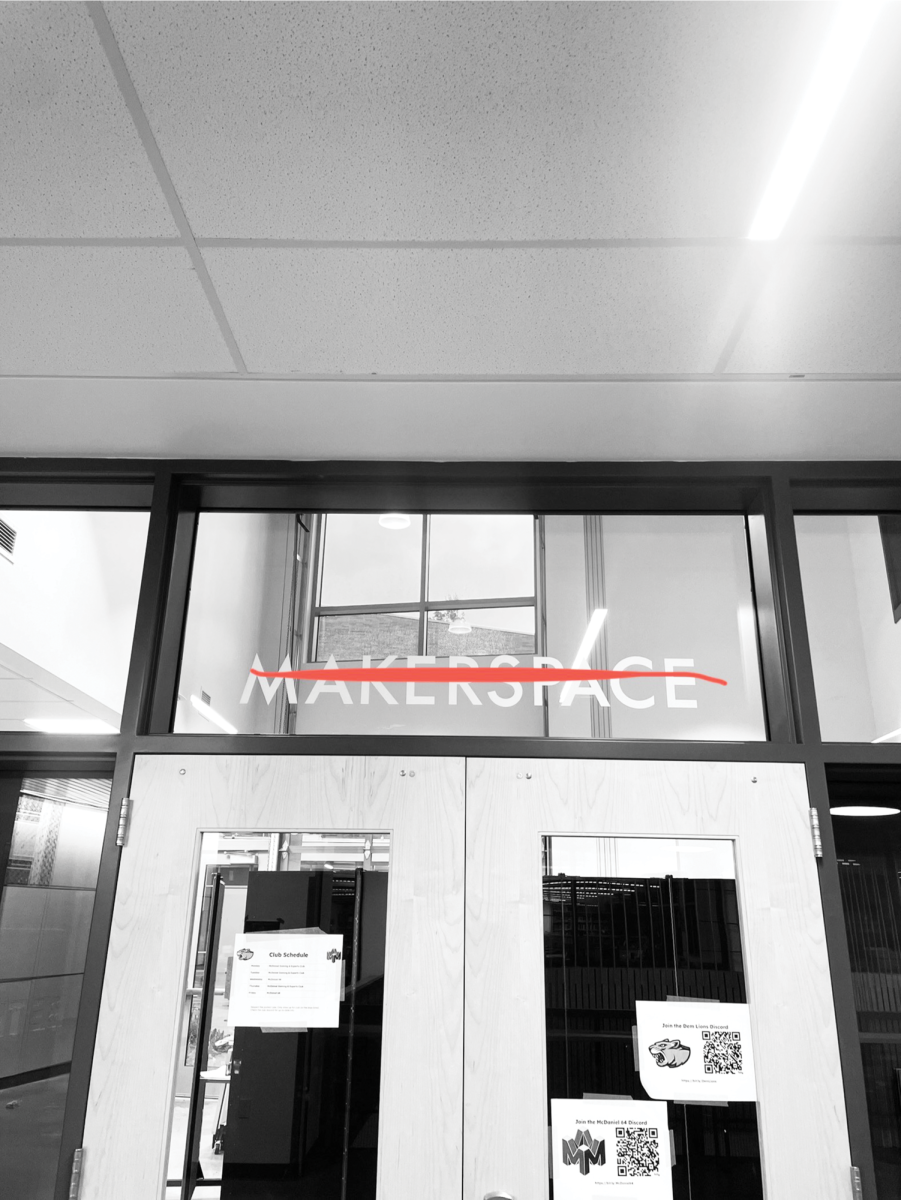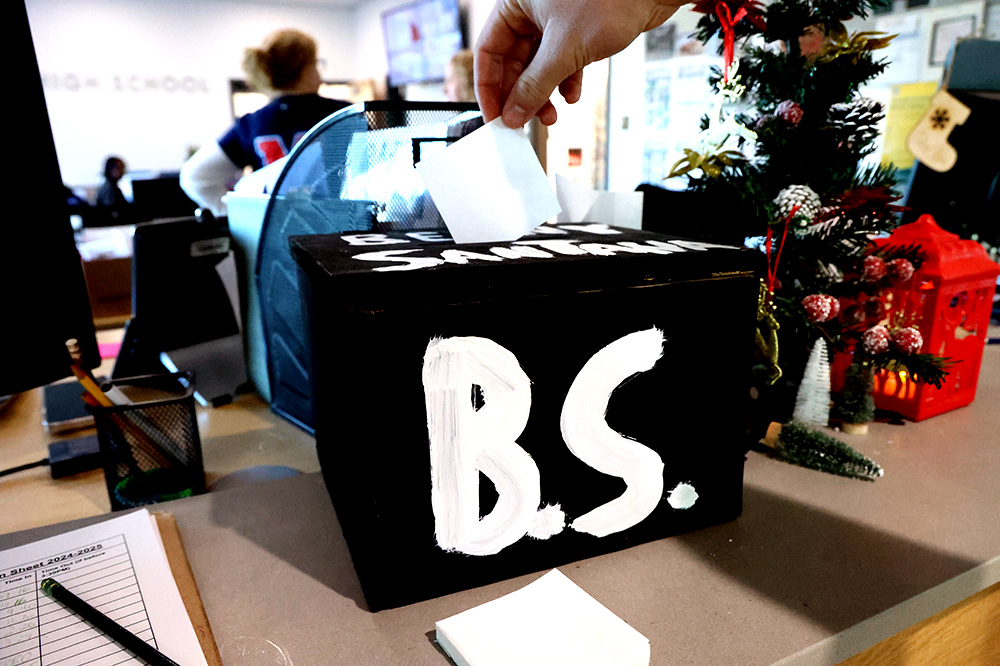On Nov. 27, PPS students returned to school after the historic month-long teachers’ strike, which closed schools for 11 instructional days. Contract negotiations between PPS and PAT had reached tentative agreement the night before, and the document was ratified on Nov. 28. Although the full impact of the new contract will not be evident until next school year, the aftermath of the strike has altered the course of the remaining school year.
Every three years the teachers’ union is able to negotiate for a new contract, which allows them to adjust working conditions, as well as achieve raises and new benefits. The teachers’ previous contract expired on June 30, meaning they were working without updated benefits or language in their employment agreement since then.
School board member Michelle DePass recognized that working without a contract is not ideal.
“That’s significant, I don’t want to downplay that at all, that’s a big deal,” DePass said.
Despite the fact that the new contract has been ratified, some changes, such as additional planning time, will not be implemented until next year. Some changes, such as an updated cost of living adjustment of 13.75% over the next three years, will take effect this year. This year they will get a 6.25% wage increase. Their wages for this year will be made whole, meaning teachers will receive the 6.25% increase to their entire paycheck starting from when the new contract was supposed to be implemented, in July, through retroactive payments.
On their website, PAT published a statement celebrating the agreement the two parties were able to come to:
“Educators have secured improvements on all our key issues. These changes will make a huge difference on priorities like mental health supports for students, educator workload relief, and safe and welcoming school environments. Educators walked picket lines alongside families, students, and allies–and because of that, our schools are getting the added investment they need.”
Making up lost time
Perhaps the most immediately apparent effect of the strike was the lost instructional time. A provision of the tentative agreement between PPS and PAT was that students would make up missed days through various avenues: utilizing the inclement weather days built into the end of the school year, transforming previous holidays into instructional time, and converting a week of winter break into school days.
The addition of these days to the school year were part of the agreement to return to work, not the contract itself.
Gary Hollands, the chair of the PPS school board, said that one of the most important factors considered when deciding to turn a week of winter break into school days was ensuring that seniors would regain as much of the school year as possible.
“One of the things it came down to was for us on the board was our seniors,” Hollands said. “Them making up the most time they can in the first semester to hopefully prepare for, you know, IB tests, AP tests, college applications and letters of recommendation and all those things. And to make sure that they got enough instructional time before their graduation.”
DePass, the Zone 2 representative on the PPS school board, said, “from the student perspective, you’re, like, why does this have to happen, and there’s no good answer, when you shut school down for 11 days, there’s no great answer. The time has to come from somewhere.”
Principal Adam Skyles agreed that the lost school time inevitably had a significant affect on the rest of the school year.
“There was gonna be an impact,” Skyles said.
AP classes
Skyles acknowledged that AP classes face a particular struggle due to the fact that AP exam dates are not changing to accommodate for the strike and there may be material that students have to cover on their own.
However, Skyles said “we are working with the AP team on additional supports that we’ll roll out in January, around maybe additional time, adding extra opportunities for students to study and prep.”
Impact on relationships
DePass does not believe that a strike of this magnitude was necessary to achieve these changes.
“Yes, we should be allowed to strike, but to shut down schools for 11 days costs a ton of money that we don’t have…it disrupted so many areas,” DePass said.
DePass was “dismayed” at certain actions exhibited during the strike, such as the publishing of multiple board members’ addresses online and the featuring of their personal phone numbers on some signs. This led to some of their homes and vehicles being vandalized and people arriving uninvited to school board members’ homes, such as DePass’s.
DePass clarified that she doesn’t think these actions reflected the values of all Portland families and eductors.
“I’ve talked to teachers and students now that were showing up in good faith to support teachers [who] didn’t realize they were being led down a path they maybe didn’t understand what was actually happening,” DePass said.
Still, the fact that DePass’s home address was public knowledge made her feel unsafe.
“I felt terrorized by my own community,” DePass said.
PAT released a statement in response to some of the behavior, which reads in part, “PAT condemns vandalism.”
DePass wonders if the changes agreed upon in the end were worth the time lost and the relationships damaged.
“I would have to ask the teachers if [the strike] was worth it, you know, for the few gains that they got,” DePass said.
On Dec. 11, PAT president Angela Bonilla published a letter on the PAT website addressing the culmination and aftermath of the strike.
She wrote, “We built a community with our neighbors, our students and each other. We showed educators and laborers across the nation that when public education is under attack, we show up and fight!”
Hollands expressed his disappointment that contract negotiations didn’t focus more on student issues.
“I always try to stay student-centered and try to think about how this will affect our kids. I think that’s the main thing that I would want our students to understand, is that we all are trying our best to make the best decisions for our students,” Hollands said.
Funding Issues
DePass said that one good thing that came out of the strike was how it spotlighted the financial shortcomings in the state education system.
“It got people kind of rallied around the real root problem, which is that we don’t fund education at the Quality Education Model,” DePass said.
The Quality Education Model (QEM) is a set of standards created by the Oregon Department of Education that details optimal classroom conditions. Historically, the state has not allocated enough money to meet these guidelines.
DePass is hopeful that the strike will inspire parents to go to Salem to advocate for increased funding for education so schools are more easily able to align with the QEM.
This year, state legislature put a record amount, $10.2 billion, into education—but this still falls short of the QEM recommendation of $11.7 billion. Over the last year, governor Tina Kotek has signed additional bills to send more funding to education services, but this money still is not sufficient to boost funding across the state to the QEM standard.
Hollands believes that a large reason why contract negotiations took so long was due to a lack of understanding around PPS’s financial standing.
He said that there will have to be some budget cuts because of shifting priorities due to the new contract.
“We’re going to try and keep them away from the classroom, but there could be possibly cuts in some programs, some staff, even at the administrative level,” Hollands said.
Future Changes: Fears & Hopes
Hollands emphasized that an important change for teachers is a new hiring process that will allow the district to hire and give work assignments, such as teaching positions and locations, to teachers at an earlier time.
“It makes [jobs in PPS] more competitive [with other districts] and also allows our teachers to know, those that want to move or know where their assignment is going to be, it helps us get to that point a lot sooner,” Hollands said.
A notable element missing in the new contract is class size caps. There are ideal caps on class sizes promised to teachers, meaning teachers will be given overage pay for classes that exceed an agreed-upon appropriate number, but smaller class sizes are not guaranteed.
DePass pointed out that class sizes across the district may have the unintended effect of damaging equity practices that are benefiting disadvantaged students. The additional support that lower-income schools receive may include the perk of smaller class sizes. If there was a change that equalized class sizes across the distinct, DePass worries that this would cause class sizes in lower-income schools to rise. She does not feel this risk is worth implementing hard class size caps.
“That’s how equity looks and feels. It doesn’t feel like it’s equal. It feels like some kids are getting more than others,” DePass said.
The overall hope for both Hollands and DePass is that the new contract, which is meant to improve teachers’ working conditions, will in turn improve the quality of education in PPS.








